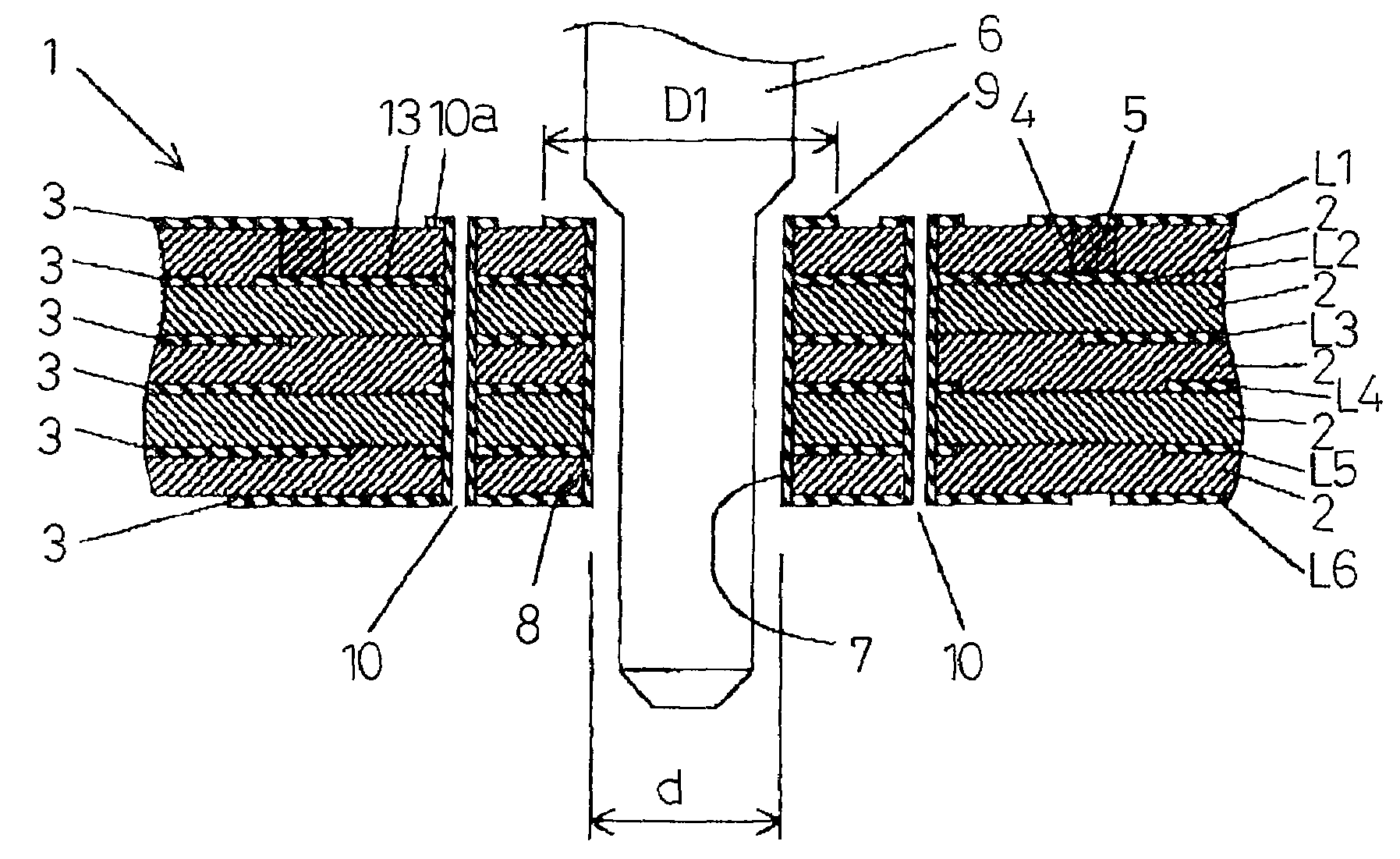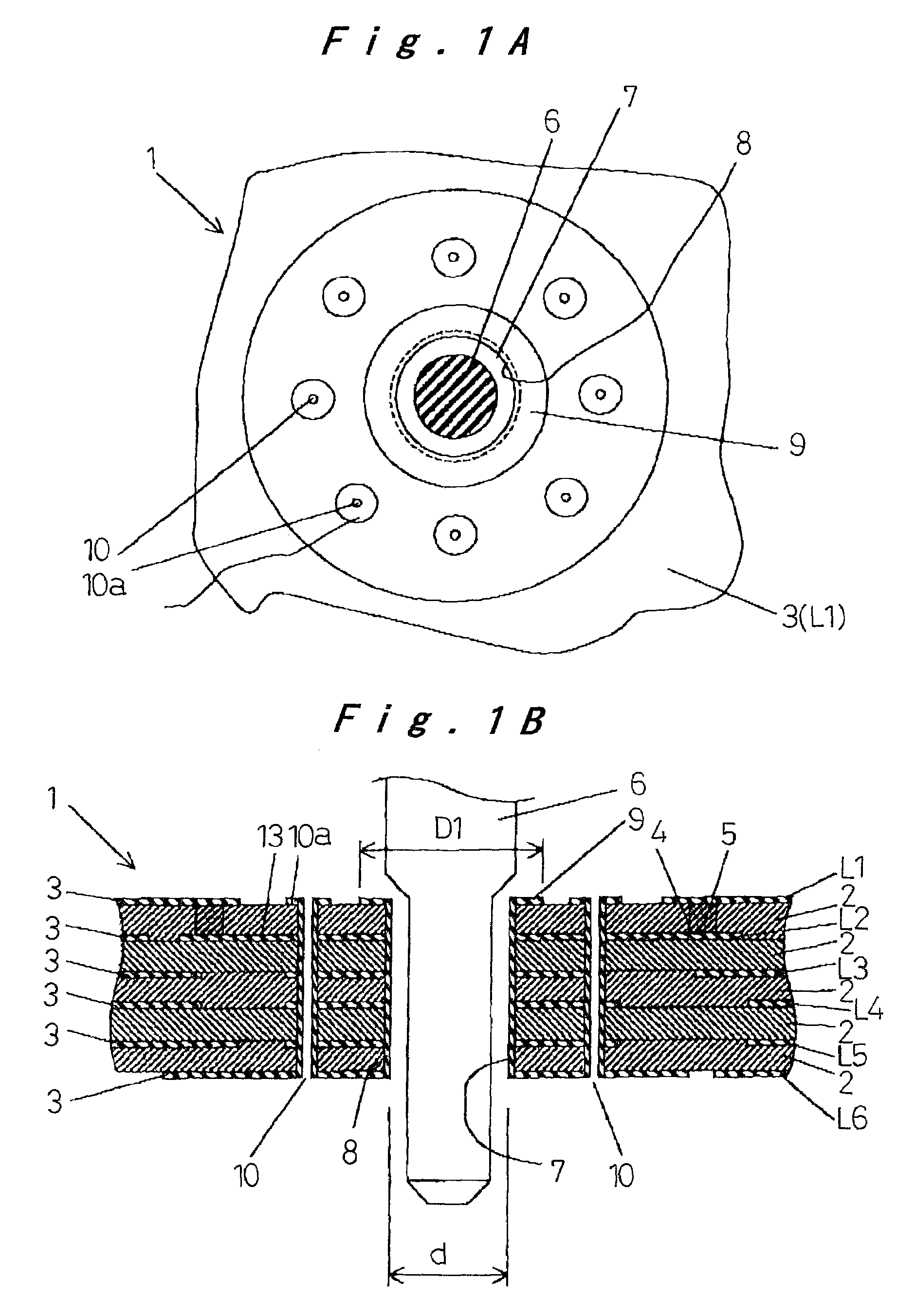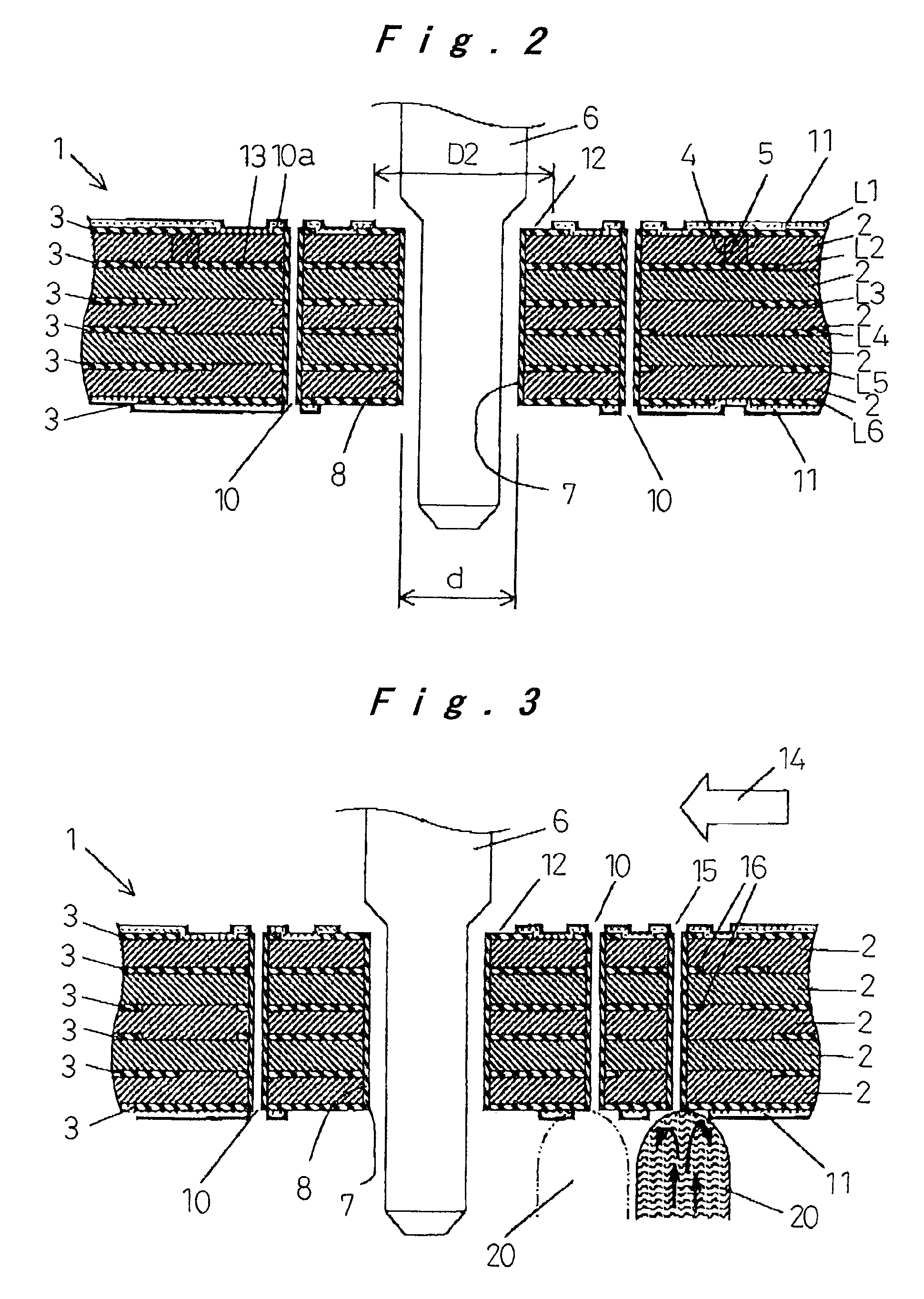Printed circuit board and soldering method and apparatus
a soldering method and circuit board technology, applied in the direction of soldering apparatus, non-printed masks, manufacturing tools, etc., can solve the problems of air entrapment, temperature difference between the upper and lower parts of the solder inside the through hole, and temperature difference in the upper part of the through hole, so as to improve the heat fatigue resistance of the solder joint, enhance the wicking effect, and prevent air entrapment
- Summary
- Abstract
- Description
- Claims
- Application Information
AI Technical Summary
Benefits of technology
Problems solved by technology
Method used
Image
Examples
first embodiment
[0030]A first embodiment will be described with reference to FIG. 1A, FIG. 1B, and FIG. 2. FIG. 1A and FIG. 1B show a multilayer printed circuit board 1 made up of five laminated insulating resin plates 2 such as glass epoxy resin. Six layers of metal foil patterns 3 such as copper foil patterns are formed as required on the front and back surfaces and in between the resin plates, denoted at L1 to L6 from the front side. These patterns 3 are connected to each other through conductive material 5 filled in holes 4 drilled in any of the insulating resin plates 2 so as to construct a three-dimensional, high-density wiring pattern.
[0031]The printed circuit board 1 includes a through hole 7 extending from the front surface to the back surface at an appropriate location of a power supply terminal pattern or ground pattern that stretches continuously over a wide area in the front metal foil pattern 3 (L1). A lead 6 of an electronic component is inserted through the hole 7 and soldered. A tu...
second embodiment
[0037]Next, a second embodiment will be described with reference to FIG. 3. Since many of the components are the same as those previously described, like components will have the same reference numerals and only the differences will be described.
[0038]In this embodiment, a via hole 15 is provided in addition to the via holes 10 on the side opposite from the direction of movement 14 of the board 1 indicated by the white arrow during the dip soldering operation. At least one or more upper layers of metal foil patterns 3 apart from the surface pattern, in the illustrated example the second and third layers of patterns L2 and L3, include connection patterns 16 to connect the via hole 15 with the tubular metal foil 8, so as to conduct heat of the solder to the through hole 7 through the via hole 15.
[0039]With this configuration, when the printed circuit board 1 undergoes the dip soldering operation in which it is moved above a dipping section 20 where molten solder is ejected upwards, th...
third embodiment
[0040]Next, a third embodiment will be described with reference to FIG. 4.
[0041]In this embodiment, the metal foil patterns 3 (L1 and L6) on the front surface and the back surface of the printed circuit board 1 are connected through via holes 17, on the outer side of the region where the insulating resin plate 2 is exposed around the through hole 7 on the surface of the board 1.
[0042]With this configuration, the high frequency impedance is lowered by connecting the metal foil patterns 3 (L1 and L6) on the front surface and the back surface by the solder filled in the via holes 17. This compensates for any decrease in the EMC effect caused by the absence of the metal foil pattern 3 (L1) over a relatively large area around the through hole 7 on the surface of the printed circuit board 1 and the lack of direct connection between the pattern 3 (L1) and the tubular metal foil 8 of the through hole 7.
PUM
| Property | Measurement | Unit |
|---|---|---|
| diameter | aaaaa | aaaaa |
| distance | aaaaa | aaaaa |
| diameter | aaaaa | aaaaa |
Abstract
Description
Claims
Application Information
 Login to View More
Login to View More - R&D
- Intellectual Property
- Life Sciences
- Materials
- Tech Scout
- Unparalleled Data Quality
- Higher Quality Content
- 60% Fewer Hallucinations
Browse by: Latest US Patents, China's latest patents, Technical Efficacy Thesaurus, Application Domain, Technology Topic, Popular Technical Reports.
© 2025 PatSnap. All rights reserved.Legal|Privacy policy|Modern Slavery Act Transparency Statement|Sitemap|About US| Contact US: help@patsnap.com



